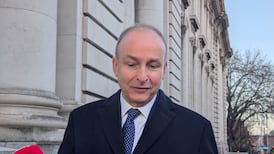The Government's stated objective is to have the best education system in Europe by 2026. This means young people having access to fully qualified teachers in key subject areas. However, staff shortages and negativity over the prospects for young graduates raise serious doubts about these ambitions.
The problem has not occurred overnight. In 2012, an international panel which reviewed teacher education in Ireland, warned of an increasing reliance in secondary schools on "out-of-field teachers" and advised that supply and demand should be monitored continuously. Only now, six years later, is the Government beginning to address these issues.
A major reason for the decrease in the supply of teachers in key areas has been the decision to add an extra year to initial teacher education courses. These two-year master’s qualifications – which replaced the old Hdip – cost some €12,000 and there is no guarantee of a job after graduation.
In addition, many schools are offering fragments of part-time jobs rather than full-time posts. The introduction of two-tier salary scales for “new entrants”, hired after 2011, has also turned some off the profession. Major progress has been made in narrowing this gap but it falls short of full pay equality. Young teachers face the challenge too of finding affordable accommodation, especially in the capital.
It is hardly surprising as a result that teaching has become less attractive as a career choice than it once was. There is evidence to suggest the academic calibre of trainees has dipped somewhat over the past decade or so, based on an unpublished official report disclosed last week in this newspaper. It found that primary teaching applicants in recent years were drawn from the top 20 per cent of Leaving Cert students, down from the top 12.5 per cent in 2009. This is not a major drop and the calibre of new entrants remains reassuringly high but it is noteworthy nonetheless.
The solutions are obvious. There should be a closer match between supply and demand for teachers. Students need to be incentivised to study subjects where there are teacher shortages. Specialised teachers should be shared across schools. Trainee teachers should be paid for their placements. And pay equality should be restored.
Efforts are underway to address some of these issues, though too many of the Government’s plans so far resemble window dressing. The best and brightest cannot be expected to continue to pursue teaching careers if the costs of training are prohibitive, working hours are few and posts are limited.
The best education can only be delivered by the best teachers. If the Government is to deliver on its laudable ambition, it needs to act accordingly within the framework of prudent management of the public finances.










